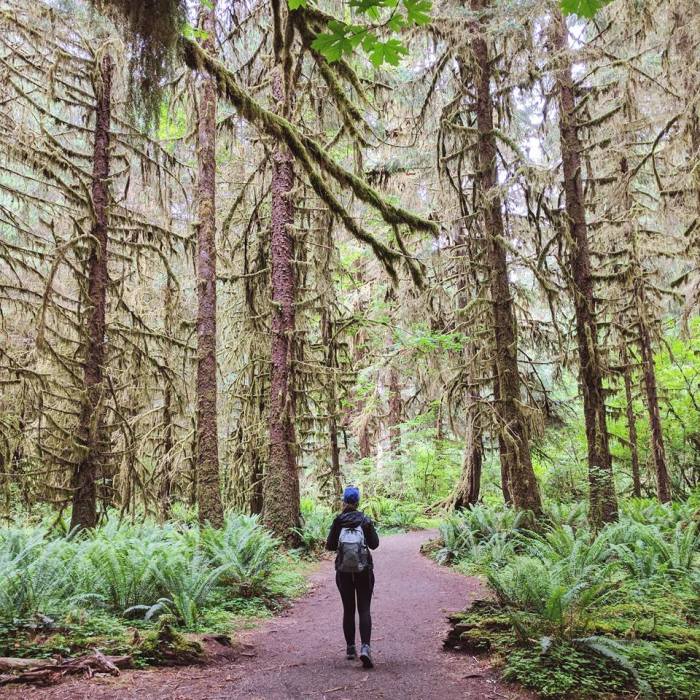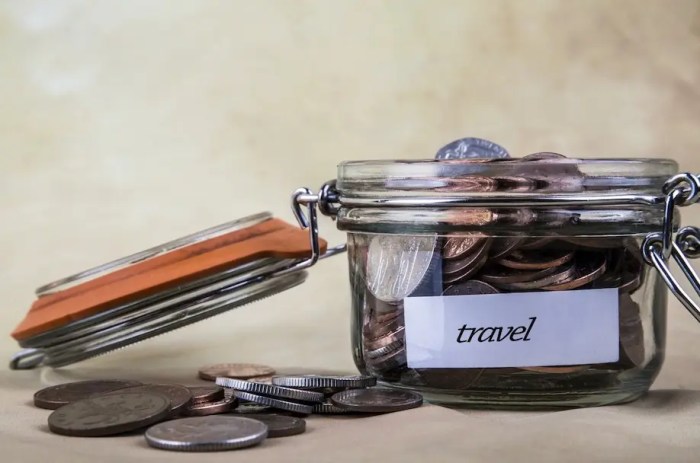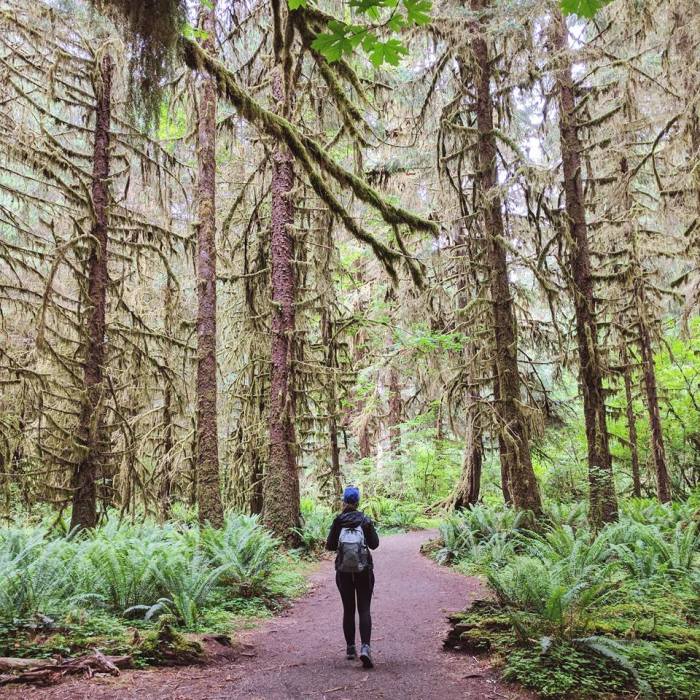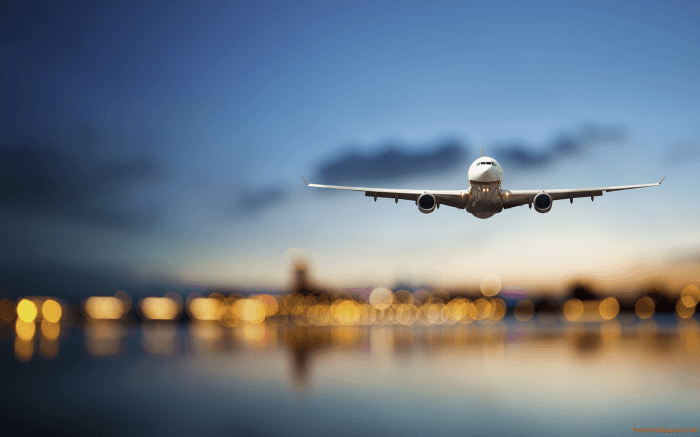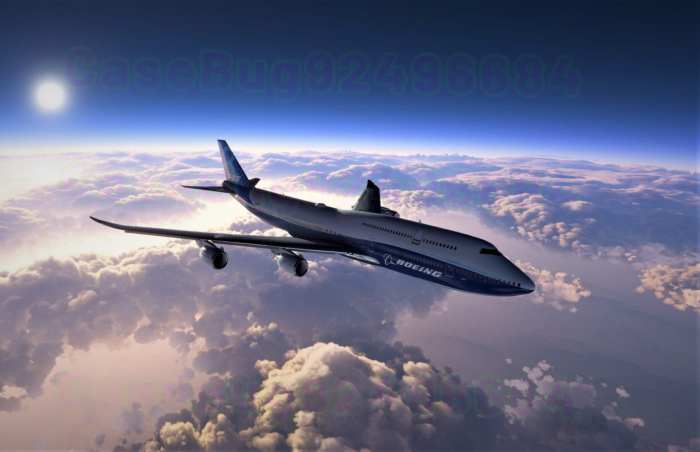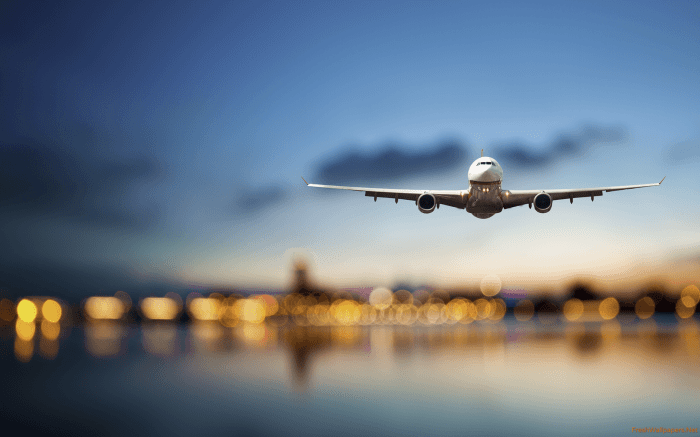Survive long haul flights and stay comfortable. This comprehensive guide will equip you with the knowledge and strategies to make your next lengthy flight a pleasant and productive experience, minimizing discomfort and maximizing enjoyment.
From meticulous pre-flight preparation to in-flight comfort techniques, entertainment, and dietary strategies, we’ll cover every aspect of a smooth, stress-free journey. We’ll explore essential packing tips, seating selection strategies, and techniques for managing jet lag and common travel ailments. Whether you’re seeking ways to stay active, entertained, or simply relaxed, this guide provides practical solutions for a comfortable and enjoyable long-haul flight.
Pre-Flight Preparation
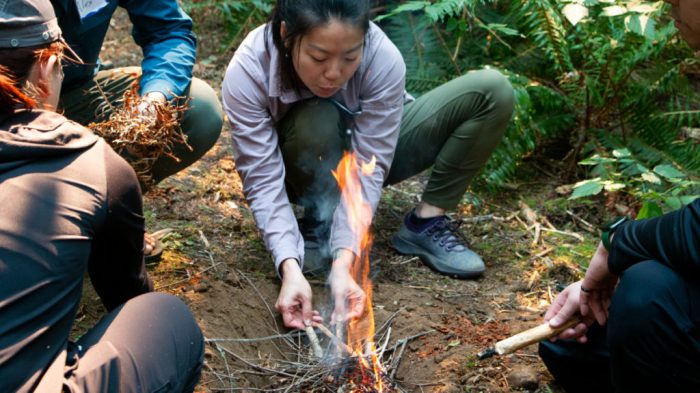
Long-haul flights can be challenging, but careful preparation can significantly improve your comfort and enjoyment. This phase focuses on maximizing your chances of a smooth and pleasant journey, from packing to pre-flight routines. Smart planning can turn a potential ordeal into a more manageable experience.Effective pre-flight preparation involves thoughtful consideration of various aspects, from clothing choices to optimizing your seating and booking.
This comprehensive guide will equip you with practical strategies to ensure a comfortable and stress-free flight.
Packing Light While Maximizing Comfort
Packing efficiently is crucial for long-haul flights. Overpacking can lead to extra weight, making you feel burdened, and the extra weight is not only inconvenient but also costly. To pack light while maximizing comfort, consider using packing cubes or compression bags to optimize space and reduce the risk of wrinkles. Choose versatile clothing items that can be mixed and matched to create multiple outfits.
Choosing Appropriate Clothing for Varying Climates and Flight Durations
Climate variations can significantly impact comfort during flights. Research the destination’s climate and pack accordingly. For example, if flying from a hot climate to a cold one, layering is essential. The duration of the flight is also a factor; shorter flights may require less layering. Consider the cabin temperature on long-haul flights, which can fluctuate.
A lightweight jacket or sweater can be a lifesaver if the cabin gets chilly.
Essential Items for Long-Haul Flights
Careful planning ensures you have everything you need for a comfortable and productive flight. Here’s a categorized list of essential items:
- Comfort: A neck pillow, eye mask, and earplugs are invaluable for maximizing sleep and minimizing disturbances. A lightweight blanket is helpful if the cabin temperature drops.
- Entertainment: Download audiobooks, podcasts, or movies to keep you engaged during downtime. A portable charger for your electronic devices is essential for keeping them running.
- Hygiene: Carry a travel-sized toothbrush, toothpaste, mouthwash, and hand sanitizer for maintaining hygiene. Wet wipes are also beneficial for quick cleansing on the go.
- Documents and essentials: Your passport, boarding pass, and any necessary travel documents should be easily accessible. A small, lightweight bag or pouch to carry these items is essential.
Optimizing Seating Selection and Pre-Booking Services
Strategic seating selection and pre-booking services can significantly enhance your flight experience. Consider aisle seats for easy access to the restroom. For maximum comfort, pre-book extra legroom seats. These seats often offer more space to stretch out and relax, which can make a significant difference on long flights.
Preparing Your Body and Mind for a Long Flight
Physical and mental preparation for a long flight is crucial. A well-prepared body and mind are essential for a smoother and more enjoyable journey.
- Hydration: Drink plenty of water in the days leading up to the flight to stay hydrated.
- Nutrition: Consume a balanced meal before the flight to avoid feeling hungry during the journey.
- Exercise: Gentle exercise, such as stretching, can improve blood circulation and reduce stiffness.
- Sleep: Get a good night’s sleep the night before the flight to help you stay rested.
- Stress Management: Techniques like deep breathing exercises or meditation can help manage stress and anxiety.
In-Flight Comfort Techniques
Long-haul flights can be challenging, but with the right strategies, you can significantly enhance your comfort and well-being. This section focuses on practical techniques to manage jet lag, maintain energy, and alleviate common travel discomforts. Effective strategies can transform a potentially stressful experience into a more pleasant and productive journey.
Managing Jet Lag and Maintaining Alertness
Jet lag, a disruption of the body’s natural sleep-wake cycle, is a common concern for long-haul travelers. Several strategies can help mitigate its effects. Consistent sleep schedules, even during the flight, can help your body adjust to the new time zone. A gradual adjustment to the destination’s schedule before the flight is also helpful. This can be done by adjusting your sleep and wake times in the days leading up to the flight.
Taking short naps during the flight can be beneficial for maintaining alertness and energy. However, avoid naps that extend beyond 30-45 minutes, as they can lead to a groggy feeling upon awakening. Exposure to natural light, as much as possible, can also help regulate your circadian rhythm. Utilizing light therapy devices may be helpful in certain circumstances.
Staying Hydrated and Nourished
Staying hydrated is crucial for maintaining comfort and preventing dehydration, especially in the dry cabin air. Carry a reusable water bottle and refill it frequently throughout the flight. Dehydration can lead to fatigue, headaches, and other discomforts. Avoid sugary drinks, which can lead to energy crashes later. Choose healthy snacks, such as fruits, vegetables, and nuts, to maintain sustained energy levels.
Eating small meals at regular intervals throughout the flight can help avoid feeling overly hungry or sluggish.
Surviving long haul flights and staying comfortable is key, especially when your next adventure involves navigating Disney World’s reduced opening hours. Recent news reports indicate Disney World reduced opening hours , so planning your trip and packing accordingly is crucial. Knowing the park hours in advance will help you strategize and make the most of your time, making those long flights less of a concern.
Managing Discomfort (Aches, Pains, and Stiffness)
Long flights can lead to aches, pains, and stiffness. Regular movement and stretching exercises are important for maintaining circulation and reducing discomfort. Walking around the cabin, when possible, can help alleviate stiffness and improve blood flow. Using compression socks or sleeves can aid in circulation and prevent swelling. Gentle stretching exercises, like shoulder rolls, neck stretches, and leg stretches, can also help alleviate discomfort.
Positioning your body in a relaxed and comfortable manner can minimize the impact of prolonged sitting.
Managing Motion Sickness and Other Travel Ailments
Motion sickness can affect travelers, particularly those prone to it. Fresh air, when possible, can help alleviate nausea. A cool, damp cloth or ice pack applied to the forehead can also provide relief. Ginger is known for its anti-nausea properties, and ginger candies or ginger tea can be helpful. Rest is often crucial.
If motion sickness persists, consult with a healthcare professional for guidance. Other travel ailments, like headaches, can be managed with over-the-counter medications or through relaxation techniques.
Combatting Cabin Pressure and Altitude Changes
Cabin pressure on airplanes is significantly lower than at ground level. This can cause discomfort or even pain for some passengers. Drinking plenty of fluids and chewing gum can help equalize pressure in the ears and sinuses. Slow, deep breathing exercises can also help alleviate discomfort. In case of persistent discomfort, consult with a medical professional for advice.
Managing Personal Space and Maintaining a Relaxed Atmosphere
Creating a personal space is essential for comfort during long flights. Select a seat that allows for adequate legroom and personal space. Bringing a lightweight blanket, pillow, or eye mask can contribute to a more comfortable and restful environment. Wearing comfortable clothing and shoes is essential. Ear plugs can help block out noise and promote relaxation.
Maintaining a calm and relaxed attitude is essential. Relaxation techniques can help create a peaceful atmosphere.
Relaxation Exercises for Long Flights
| Exercise | Description |
|---|---|
| Deep Breathing | Inhale deeply through your nose, hold for a few seconds, and exhale slowly through your mouth. Repeat several times. |
| Progressive Muscle Relaxation | Tense and release different muscle groups in your body, starting with your toes and working your way up to your head. |
| Guided Imagery | Visualize a peaceful scene or a relaxing place. Focus on the sights, sounds, and sensations of this place. |
| Mindfulness Meditation | Focus on the present moment without judgment. Pay attention to your breath, bodily sensations, and thoughts. |
Entertainment and Productivity
Long-haul flights can be a test of patience. To make the journey more enjoyable and productive, you need strategies for entertainment and staying engaged. This section explores various options for keeping yourself occupied and focused during the flight, from books and movies to productivity techniques and useful apps. Finding the right balance between relaxation and getting things done can make the difference between a dreadful flight and a productive one.The key to a successful long-haul flight lies in preparation.
Knowing what you’ll do to occupy yourself and how you’ll approach any work or personal tasks is crucial. Choosing the right entertainment and having a plan for productivity will significantly enhance your overall experience.
Entertainment Options
Choosing the right entertainment is key to a pleasant flight. Different mediums offer varying levels of engagement and immersion.
- Books: Reading is a classic way to pass the time. A captivating novel or an informative non-fiction book can transport you to another world or provide valuable insights. Choose a book that aligns with your preferred reading style and the duration of your flight. For example, a shorter, engaging novel might be ideal for a 6-hour flight, while a comprehensive biography could suit a longer journey.
- Movies and TV Shows: Streaming services offer a wide selection of movies and TV shows, catering to diverse tastes and preferences. This can be a great option for visual stimulation, particularly if you find yourself needing a break from reading. Streaming options also provide flexibility in terms of choosing the type of content and adjusting the pacing to suit your preferences.
- Music: Music can be a powerful tool for setting the mood and enhancing the experience. Create a playlist that suits your preferences and helps you maintain a specific mood, or switch between playlists to adjust your mental state throughout the flight. Consider using noise-canceling headphones to further immerse yourself in the audio.
Productivity Strategies
Maintaining a sense of structure and schedule can significantly improve productivity and reduce stress on a long flight.
- Planning: Before the flight, create a rough schedule for your time. This might include blocks of time dedicated to work, relaxation, or personal tasks. Be realistic about what you can accomplish, as long flights can lead to fatigue.
- Time Management: Use time management techniques like the Pomodoro Technique to stay focused on work tasks. Break down larger projects into smaller, more manageable chunks to prevent feeling overwhelmed.
- Designated Work Zones: If possible, try to find a quiet zone on the plane. This will help you focus on your tasks and avoid distractions. This might involve choosing a seat in a quieter section of the cabin or utilizing a personal space like a cabin office, if available.
In-Flight Entertainment and Work Apps/Websites
A range of tools can enhance your flight experience.
- Streaming Services: Netflix, Hulu, Amazon Prime Video, and similar services offer extensive libraries of movies, TV shows, and documentaries.
- E-readers: Kobo, Kindle, and similar devices allow you to access a vast collection of books and magazines on your electronic device.
- Productivity Apps: Trello, Asana, or other project management apps can help you stay organized and manage your tasks during the flight.
- Online Courses: Many platforms offer courses on various subjects that you can access on your laptop or tablet.
Preventing Boredom
Staying engaged is essential for a smooth flight.
- Variety: Mixing entertainment activities, such as reading, listening to music, and watching movies, can help prevent boredom. A diverse approach keeps your mind stimulated and avoids monotony.
- Challenges: Set personal challenges, such as trying to complete a specific number of pages from a book or solving a puzzle, to keep yourself engaged and stimulated.
- Mindfulness Exercises: Engage in simple mindfulness exercises to maintain a calm and focused state. This will help you avoid boredom and stay relaxed.
Getting Good Sleep
Getting good sleep on a long flight can be a challenge, but it’s important for your overall well-being.
- Comfortable Position: Choose a comfortable position, and use a neck pillow or other support to maximize comfort and reduce discomfort. Adjust your seat to a position that allows you to recline comfortably and sleep without feeling cramped.
- Eye Mask and Earplugs: Utilize eye masks and earplugs to block out light and noise, promoting a more conducive environment for sleep.
- Sleep Hygiene: Maintaining good sleep hygiene, including a regular sleep schedule and a relaxing bedtime routine, can help you sleep better on the flight.
Using Flight Time for Work or Personal Tasks
- Prioritization: Prioritize tasks to ensure that you’re focusing on the most important ones during the flight. This will help you avoid feeling overwhelmed and will allow you to complete more tasks during the journey.
- Chunking: Break down large tasks into smaller, more manageable chunks. This will help you stay focused and avoid feeling overwhelmed by the size of the project.
- Flexibility: Be flexible with your schedule. The flight may involve unexpected delays or disruptions. Adjust your schedule to accommodate these situations.
Comparison Table of In-Flight Entertainment
| Entertainment Option | Pros | Cons |
|---|---|---|
| Books | Engaging stories, diverse genres, portable, can be deeply immersive. | Requires concentration, may not be suitable for all travelers. |
| Movies/TV Shows | Visual stimulation, varied content, good for relaxation, can be immersive. | May be distracting if not focused. |
| Music | Sets mood, enhances experience, portable, can be deeply engaging. | May not be suitable for all preferences, could be distracting if not focused. |
Dietary Strategies
Fueling your body properly is crucial for a comfortable and enjoyable long-haul flight. Proper nutrition and hydration can significantly impact your energy levels, mood, and overall well-being during the journey. This section provides practical strategies for making smart dietary choices, regardless of dietary restrictions or preferences.Maintaining consistent energy levels throughout a long flight is essential for preventing fatigue and maintaining focus.
This is best achieved through a balanced approach to nutrition and hydration. Choosing the right foods and drinks can also contribute to your comfort and reduce the risk of common travel-related issues like digestive discomfort.
Surviving long haul flights and staying comfy is key, especially when you’re navigating the world. Checking in on your health, like taking a quick FDA home COVID test before you go, can ease anxieties and help you stay focused on relaxation during the trip. After all, a healthy body is a happy body, and that translates to a more comfortable and enjoyable flight.
Healthy and Satisfying Meal Choices
A well-planned meal can help maintain energy levels and reduce the risk of feeling sluggish or experiencing discomfort during a long flight. Opt for meals rich in protein, complex carbohydrates, and healthy fats to keep you feeling full and energized. Consider lean proteins like chicken or fish, whole-grain options like brown rice or quinoa, and healthy fats from nuts, seeds, or avocados.
Importance of Proper Nutrition and Hydration
Proper nutrition and hydration are paramount for overall well-being, especially during extended periods of travel. Dehydration can lead to fatigue, headaches, and digestive issues. Consuming adequate fluids and nutritious foods helps maintain energy levels, improves focus, and supports a healthy digestive system.
Healthy Snacks and Drinks
Pre-planning healthy snacks and drinks can prevent impulsive choices and ensure you have readily available nutritious options. A variety of options can cater to individual preferences and dietary needs.
- Fruits (apples, bananas, oranges, berries): Offer natural sugars and essential vitamins. These are portable and easy to consume. Portion sizes should be considered to avoid excess sugar intake.
- Vegetables (carrots, celery, cucumber): Provide essential vitamins and fiber, keeping you feeling full and preventing sugar crashes.
- Nuts and seeds (almonds, walnuts, pumpkin seeds): Offer healthy fats, protein, and fiber for sustained energy.
- Hard-boiled eggs: A good source of protein, easy to prepare, and readily available.
- Greek yogurt: A source of protein and calcium, ideal for a quick and satisfying snack.
- Water, unsweetened tea, or herbal infusions: Essential for hydration, preventing dehydration and fatigue.
Making Your Own Meals
If permitted, preparing your own meals can be a cost-effective and personalized way to ensure you’re getting the nutrients you need. Research the airline’s policies on bringing in food.
- Pack pre-portioned containers with your preferred healthy meals.
- Choose easily transportable and non-messy foods.
- Ensure your meals meet the necessary safety standards.
Avoiding Food-Related Issues
Travel can sometimes disrupt the digestive system. Careful planning can mitigate these potential issues.
- Avoid foods that are known to cause digestive issues for you.
- Stick to familiar foods during the trip.
- Drink plenty of water to stay hydrated.
- Eat meals at regular intervals to avoid feeling overly hungry or full.
Choosing Meals Considering Dietary Restrictions or Preferences
Understanding dietary needs and preferences is key for a comfortable flight experience. Pre-planning is crucial.
Long haul flights can be brutal, but comfort is key. Checking out travel tips from famous globetrotters like Anthony Bourdain, a culinary legend and fascinating traveler, can offer some unexpected insights. travel tips celebrity travel anthony bourdain travel food can offer practical strategies for surviving those long journeys and keeping your sanity. Ultimately, the goal is to remain relaxed and refreshed, making the most of your destination.
- Inform the airline about your specific dietary requirements, including allergies, intolerances, or preferences.
- Request special meals in advance, as some airlines may not have adequate options on-board.
- Pack snacks that accommodate your needs.
Comparison of In-Flight Meal Options
The following table provides a comparison of different meal options available on flights, considering factors such as cost, nutritional value, and convenience.
| Meal Option | Cost | Nutritional Value | Convenience |
|---|---|---|---|
| Airline Meal | Variable | Variable (can be healthy or not) | Convenient (provided) |
| Snacks (pre-packed or purchased) | Variable | High if healthy choices are made | High if pre-packed |
| Drinks (water, tea, juice) | Variable | High if water/tea, lower if juice | High if bottled |
Staying Active and Mobile
Long-haul flights can be incredibly uncomfortable, leading to stiffness, muscle aches, and circulation issues. Staying active and mobile during these journeys is crucial for maintaining comfort and preventing health problems. Simple exercises and stretches can significantly improve your experience and help you arrive at your destination feeling refreshed.Maintaining mobility on a plane involves a combination of mindful movement, strategic stretches, and staying hydrated.
By incorporating these strategies into your flight routine, you can mitigate the negative effects of prolonged sitting and arrive feeling more alert and energized.
Methods for Staying Active and Mobile
Staying active on a plane requires conscious effort, but it’s achievable with the right approach. A few simple techniques can help you stay comfortable and maintain circulation throughout the flight. This includes stretching regularly, taking short walks when possible, and keeping your muscles engaged.
Benefits of Light Exercise and Stretching
Light exercise and stretching can dramatically improve your comfort during a long flight. Stretching helps alleviate stiffness, promoting a sense of well-being and preventing potential discomfort. Regular movement improves circulation, reducing the risk of blood clots and promoting a more relaxed state.
Tips for Maintaining Circulation and Preventing Stiffness
To maintain circulation and prevent stiffness, remember to change your position regularly. Getting up and moving around every hour or so is ideal. If possible, walk up and down the aisle, or simply shift your weight from side to side. Avoid crossing your legs for extended periods as this can restrict blood flow. Additionally, wearing loose, comfortable clothing can promote better blood circulation.
Different Stretches and Exercises on a Plane
These stretches are easy to perform in the confines of an airplane seat.
- Neck Stretches: Gently tilt your head to each side, then forward and backward, holding each stretch for 15-20 seconds. These stretches help alleviate tension in the neck and shoulders, common issues on long flights.
- Shoulder Stretches: Extend one arm in front of you and gently pull it towards your chest with the opposite hand. Hold for 15-20 seconds and repeat on the other side. This helps release tension in the shoulder and upper back muscles.
- Leg Stretches: Extend one leg straight out in front of you and gently pull your toes towards your shin. Hold for 15-20 seconds and repeat on the other side. This can help maintain flexibility in the legs.
- Calf Stretches: Place your feet flat on the floor, then gently lean forward from your ankles. Hold for 15-20 seconds. This helps prevent stiffness in the lower legs.
Importance of Hydration, Survive long haul flights and stay comfortable
Staying hydrated is essential for maintaining energy levels and overall comfort. Dehydration can lead to fatigue, headaches, and stiffness, all of which can make a long flight more challenging. Carry a water bottle and sip on it regularly, even if you don’t feel thirsty. Consuming plenty of water keeps your body functioning optimally and promotes overall well-being during the flight.
Entertainment and Active Engagement
Finding ways to keep yourself engaged while staying active can make a huge difference on a long flight. Bring a book or magazine to read, or play a game on your phone or tablet. Listening to audiobooks or podcasts can be another engaging way to pass the time. These activities can help you stay entertained and maintain your alertness and mobility during the flight.
Table of Exercises to Combat Stiffness, Discomfort, and Increase Circulation
| Exercise | Description | Duration | Frequency |
|---|---|---|---|
| Neck Stretches | Tilt head to each side, forward, and backward. | 15-20 seconds per stretch | Repeat 2-3 times per stretch |
| Shoulder Stretches | Extend one arm and pull it towards chest with opposite hand. | 15-20 seconds per stretch | Repeat 2-3 times per stretch |
| Leg Stretches | Extend one leg and pull toes towards shin. | 15-20 seconds per stretch | Repeat 2-3 times per stretch |
| Calf Stretches | Lean forward from ankles with feet flat on floor. | 15-20 seconds | Repeat 2-3 times |
| Arm Circles | Circle arms forward and backward. | 10-15 repetitions per direction | Repeat 2-3 times |
Choosing the Right Gear: Survive Long Haul Flights And Stay Comfortable

Long-haul flights can be incredibly taxing, but the right gear can significantly enhance your comfort and enjoyment. Careful selection of travel accessories and clothing can transform a potentially uncomfortable journey into a more pleasant experience. From supportive pillows to practical footwear, the right choices can make all the difference.Choosing the right travel gear is crucial for a comfortable and productive flight.
Investing in well-designed and supportive accessories can minimize discomfort and maximize your travel experience. This includes everything from travel pillows to clothing and footwear, all tailored to the specific needs of long-haul flights.
Comfortable Travel Pillows
Travel pillows come in a variety of shapes and sizes, catering to different neck and head shapes. Choosing the right pillow is essential for minimizing neck pain and discomfort during extended periods of sitting. A well-chosen pillow provides crucial support, promoting better posture and relaxation.
- U-shaped pillows provide excellent support for the neck and head, cradling them in a comfortable position. They often feature soft, plush materials for added comfort.
- Neck pillows offer targeted support for the neck, reducing strain and promoting a more natural posture. They are often lightweight and compact for easy storage.
- Inflatable pillows are lightweight and portable, easily compacting for storage. They can be customized to fit your head and neck, offering personalized support.
- Memory foam pillows conform to the shape of your head and neck, providing customized support. They often offer long-term comfort and can be a good choice for those prone to neck pain.
Importance of Supportive Travel Accessories
Choosing supportive travel accessories goes beyond mere comfort; it can significantly impact your overall well-being during a long flight. Supportive accessories like eye masks, earplugs, and blankets can help create a more relaxing and conducive environment for sleep or relaxation.
- Eye masks block out light, aiding in better sleep and reducing eye strain. They create a more restful environment by limiting external stimulation.
- Earplugs block out unwanted noise, promoting a more peaceful environment for sleep. This is particularly helpful in noisy environments like airplanes.
- Blankets provide warmth and comfort, especially during cooler cabin temperatures. A lightweight, compact blanket is ideal for travel.
Methods for Selecting and Buying Travel Accessories
Several methods can help you choose the right travel accessories. Consider online reviews, comparisons, and personal recommendations to guide your selection. Reading reviews from other travelers can offer insights into the practicality and comfort of various accessories.
- Online research is an effective method to compare different products and brands. Reading reviews from previous customers provides valuable insights into the quality and comfort of the accessories.
- Personal recommendations from friends or family who have used similar products can offer valuable insights. Personal experiences can provide firsthand accounts of the effectiveness and comfort level of the accessories.
- In-store comparisons allow you to physically examine and feel the products before making a purchase. This hands-on approach can provide valuable insights into the material quality and comfort.
Practical Travel Accessories
Essential travel accessories include eye masks, earplugs, neck pillows, and blankets. These items can significantly enhance your comfort and relaxation during a long flight.
- Eye masks provide darkness for better sleep, reducing eye strain and promoting relaxation.
- Earplugs block out noise, enabling more peaceful sleep or relaxation in noisy environments.
- Neck pillows support the neck and head, minimizing discomfort and promoting good posture.
- Blankets provide warmth and comfort, especially during cooler cabin temperatures.
Travel Clothing for Long Flights
Comfortable, loose-fitting clothing is ideal for long flights. Layers are beneficial for adjusting to changing cabin temperatures. Practical clothing choices include comfortable t-shirts, pants, or joggers.
- Comfortable clothing, such as t-shirts, sweatpants, or leggings, are crucial for maintaining comfort during long flights.
- Layers are essential for adjusting to fluctuating cabin temperatures. Having layers allows you to adjust to changing temperatures.
Comfortable Travel Shoes
Comfortable shoes are essential for long flights. Consider lightweight, supportive shoes with good arch support. Comfortable walking shoes are ideal for those who prefer to move around during the flight.
- Lightweight shoes minimize the strain on your feet and ankles during prolonged periods of sitting.
- Supportive shoes with good arch support are crucial for maintaining comfort during long flights.
- Walking shoes are suitable for those who prefer to move around the cabin during the flight.
Comparison Table of Travel Accessories
| Accessory | Features | Comfort | Suitability |
|---|---|---|---|
| Eye Mask | Blocks light | High | Promoting sleep |
| Earplugs | Blocks noise | High | Creating a quiet environment |
| Neck Pillow | Supports neck | High | Minimizing neck pain |
| Blanket | Provides warmth | High | Maintaining comfort |
Ultimate Conclusion
In conclusion, surviving and enjoying long haul flights is achievable with careful planning and the right strategies. By preparing in advance, adopting in-flight comfort techniques, and engaging in productive activities, you can transform your lengthy journey into a positive experience. Remember that comfort and enjoyment are key to a successful long flight.

